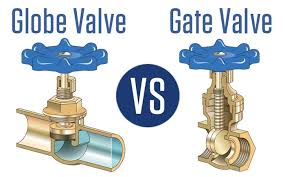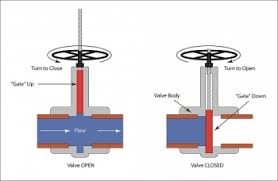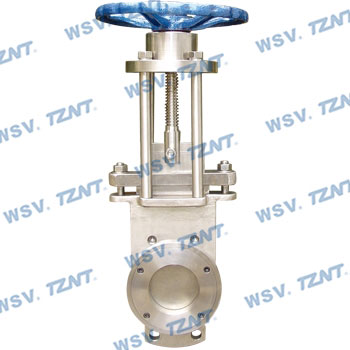Globe Valve And Gate Valve Difference

The Application of Globe Valve And Gate Valve
Introducing Rotork Globe Valve And Gate Valve, renowned for their excellence in fluid control systems. The globe valve 1/2 is adept at regulating flow due to its design, which allows for precise adjustment of flow rates and pressure. When comparing globe valve vs gate valve, while both are essential for fluid control, their mechanisms differ. Gate valves provide uninterrupted flow when fully open, ideal for on/off applications, while globe valves offer finer control with their stem and disc arrangement, suitable for throttling. In gate valves vs globe valves, gate valves excel in high-pressure environments, whereas globe valves shine in low to medium-pressure systems, offering versatility in fluid control solutions. Trust Rotork for reliable Globe Valve And Gate Valve solutions tailored to your specific needs.
What Is Globe Valve And Gate Valve?
Globe valves and gate valves are essential components in fluid control systems.
Globe valves regulate flow through a system using a disc that moves up and down against the flow path, allowing for precise control over flow rates and pressure.
Gate valves, on the other hand, feature a gate-like disc that moves perpendicular to the flow, providing a straight-through flow path when fully open and tight shut-off when closed.
Both valves serve different purposes: globe valves are ideal for throttling and regulating flow, while gate valves are best suited for on/off applications.
How Does Globe Valve And Gate Valve work?
Both globe valves and gate valves operate by controlling the flow of fluids within a system.
Globe valves use a disc and stem mechanism to adjust flow rates by moving the disc against the flow path, while gate valves utilize a gate-like disc that moves perpendicular to the flow, allowing or blocking fluid passage.When opened, fluid flows through the valve, and when closed, the disc or gate obstructs the flow, providing precise control over fluid flow and pressure.
Features of Globe Valve And Gate Valve
- Globe Valve:
- Precise Control: Offers precise regulation of flow rates and pressure due to its design, making it suitable for throttling applications.
- Stem and Disc Arrangement: Features a stem and disc arrangement that moves perpendicular to the flow path, allowing for efficient flow regulation.
- Versatility: Suitable for a wide range of fluid types and operating conditions, making it a versatile option for various industries.
- Reliable Shut-Off: Provides a reliable shut-off mechanism, minimizing the risk of leakage when closed, ensuring system integrity.
- Durable Construction: Constructed from high-quality materials, ensuring durability and longevity, even in harsh environments.
- Gate Valve:
- Straight-Through Flow: Offers a straight-through flow path when fully open, providing minimal pressure drop and unrestricted flow.
- On/Off Applications: Ideal for on/off applications due to its simple operation and ability to provide full closure.
- Low Maintenance: Requires minimal maintenance due to its simple design, reducing downtime and operational costs.
- Bi-Directional Flow: Allows for bi-directional flow, providing flexibility in system design and installation.
- Suitable for High Pressure: Well-suited for high-pressure applications, offering robust performance and reliable shut-off capabilities.
Advantages of Globe Valve And Gate Valve
- Advantages of Globe Valve:
- Precise Regulation: Globe valves offer precise control over flow rates and pressure, making them ideal for applications requiring accurate adjustments.
- Versatility: Suitable for a wide range of fluid types and operating conditions, providing versatility in fluid control solutions.
- Reliable Shut-Off: Globe valves provide a reliable shut-off mechanism, minimizing the risk of leakage and ensuring system integrity.
- Throttling Capabilities: Well-suited for throttling applications, allowing for smooth and gradual adjustments to flow rates.
- Durable Construction: Constructed from high-quality materials, globe valves offer durability and longevity, even in demanding environments.
- Advantages of Gate Valve:
- Straight-Through Flow: Gate valves offer a straight-through flow path when fully open, minimizing pressure drop and providing unrestricted flow.
- Simple Operation: Easy to operate with a simple mechanism, making them suitable for on/off applications requiring quick and efficient flow control.
- Low Maintenance: Gate valves require minimal maintenance due to their simple design, reducing downtime and operational costs.
- Bi-Directional Flow: Capable of accommodating bi-directional flow, offering flexibility in system design and installation.
- High Pressure Applications: Well-suited for high-pressure applications, gate valves provide robust performance and reliable shut-off capabilities.

The Specifications of Globe Valve And Gate Valve
| Specification | Globe Valve | Gate Valve |
|---|---|---|
| Type | Globe Valve | Gate Valve |
| Ball Material | N/A | N/A |
| Attachment Type | Flanged, threaded, or welded connections | Flanged, threaded, or welded connections |
| Thread Standard | ANSI, BSPP, NPT, or DIN standards | ANSI, BSPP, NPT, or DIN standards |
| Thread Size | Varies depending on valve size and type | Varies depending on valve size and type |
| Body Material | Stainless steel, cast iron, or bronze | Cast iron, ductile iron, or stainless steel |
| Safe for Use With | Water, air, oil, gas, or other compatible fluids | Water, air, oil, gas, or other compatible fluids |
| Handle Type | Handwheel, lever, or actuator | Handwheel, lever, or actuator |
| Handle Material | Steel, aluminum, or other durable material | Steel, aluminum, or other durable material |
| Maximum Working Pressure psi | Varies depending on valve size, type, and material | Varies depending on valve size, type, and material |
| Maximum Working Pressure bar | Varies depending on valve size, type, and material | Varies depending on valve size, type, and material |
| Operating Pressure | Varies based on system requirements and valve specifications | Varies based on system requirements and valve specifications |
The Parameter of Globe Valve And Gate Valve
- Type: Globe Valve And Gate Valve are two distinct types of valves used in fluid control systems.
- Ball Material: The material of the ball inside the valve, which is relevant for globe valves only.
- Attachment Type: Various attachment options available such as flanged, threaded, or welded connections.
- Thread Standard: Adheres to industry standards such as ANSI, BSPP, NPT, or DIN, ensuring compatibility with other system components.
- Thread Size: Varies depending on valve size and type, accommodating different system requirements and flow rates.
- Body Material: Constructed from materials like stainless steel, cast iron, or bronze for globe valves, and cast iron, ductile iron, or stainless steel for gate valves.
- Safe for Use With: Suitable for use with water, air, oil, gas, or other compatible fluids commonly used in industrial processes.
- Handle Type: Equipped with handwheel, lever, or actuator for manual or automated operation.
- Handle Material: Made from materials like steel, aluminum, or other durable materials to ensure smooth and reliable operation.
- Maximum Working Pressure (psi): The maximum pressure the valve can withstand, measured in pounds per square inch (psi).
- Maximum Working Pressure (bar): The maximum pressure the valve can withstand, measured in bars.
- Operating Pressure: The pressure range in which the valve operates effectively, ensuring optimal performance and efficiency.
The Operation Theory of Globe Valve And Gate Valve
- Globe Valve Operation:
- Stem and Disc Mechanism: In a stainless steel globe valve or a DSI globe valve, a stem connected to a disc moves perpendicular to the flow path.
- Flow Regulation: As the stem is turned, the disc either moves closer to or farther away from the valve seat, regulating the flow of fluid through the valve.
- Throttling Capability: Globe valves are particularly suitable for throttling applications due to their ability to precisely control flow rates.
- Directional Flow: The flow direction in a globe valve is perpendicular to the direction of the stem movement.
- Gate Valve Operation:
- Gate Disc Movement: In a gate valve, a gate-like disc moves perpendicular to the flow path, either fully blocking or allowing the flow of fluid through the valve.
- On/Off Functionality: Gate valves are primarily used for on/off applications, providing a tight seal when closed to prevent the flow of fluid.
- Minimal Flow Restriction: When fully open, gate valves offer minimal flow restriction, allowing for the efficient passage of fluid.
- Unidirectional Flow: The flow direction in a gate valve is parallel to the direction of the gate disc movement.
The Parameters Table of Globe Valve And Gate Valve
| Parameter | Globe Valve | Gate Valve |
|---|---|---|
| Type | Globe Valve | Gate Valve |
| Ball Material | Stainless steel, brass, or other corrosion-resistant material | N/A |
| Stem Material | Stainless steel, bronze, or other durable material | Stainless steel, bronze, or other durable material |
| Body Material | Stainless steel, cast iron, or bronze | Cast iron, ductile iron, or stainless steel |
| Seat Material | PTFE, EPDM, or other resilient material | Brass, bronze, or other durable material |
| Seal Material | PTFE, EPDM, or other resilient material | Brass, bronze, or other durable material |
| Handle Material | Steel, aluminum, or other durable material | Steel, aluminum, or other durable material |
| Attachment Type | Flanged, threaded, or welded connections | Flanged, threaded, or welded connections |
| Maximum Working Pressure (psi) | Varies depending on valve size, type, and material | Varies depending on valve size, type, and material |
| Maximum Working Pressure (bar) | Varies depending on valve size, type, and material | Varies depending on valve size, type, and material |
| Operating Pressure | Varies based on system requirements and valve specifications | Varies based on system requirements and valve specifications |
